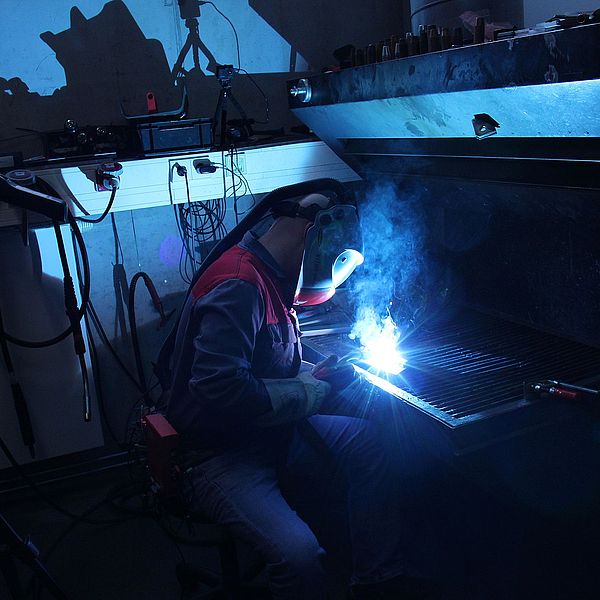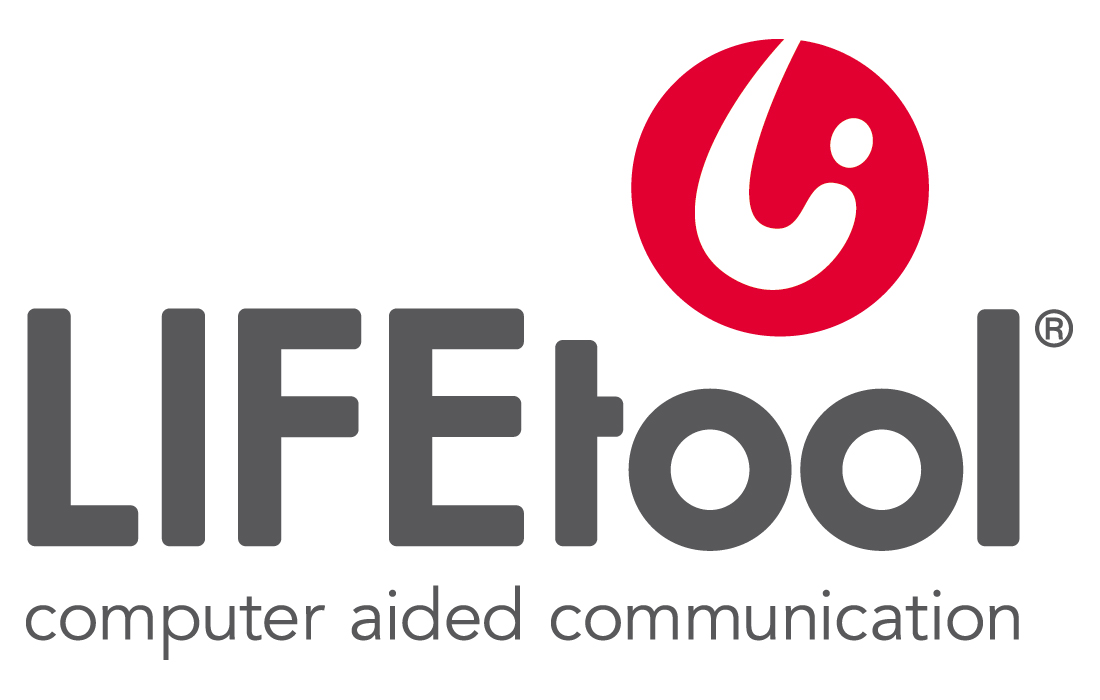array (2 items)settings =>
limit => '0 ' (1 chars)
project => 'author => 'year => '0 ' (1 chars) project => title => protected 'WIFI - Welding Interaction in Future Industry ' (45 chars)
startdate => protected DateTime prototype object (2016-10-01T00:00:00+02:00, 1475272800)enddate => protected DateTime prototype object (2018-09-30T00:00:00+02:00, 1538258400)description => protected '<h2>Industrial Welding</h2>
<p>Currently, there are about 4000 companies in ' (3862 chars)
colorCode => protected '#2B2D42 ' (7 chars)
active => protected FALSE
teaserimage => protected uidLocal => protected 124 (integer)
configurationManager => protected objectManager => protected TYPO3\CMS\Extbase\Object\ObjectManager singleton object filtered concreteConfigurationManager => protected flexFormService => protected TYPO3\CMS\Core\Service\FlexFormService singleton object configuration => protected
userFunc => 'TYPO3\CMS\Extbase\Core\Bootstrap->run ' (37 chars)
extensionName => 'PeecExtension ' (13 chars)
pluginName => 'Peecfe ' (6 chars)
vendorName => 'PEEC ' (4 chars) contentObject => protected TYPO3\CMS\Frontend\ContentObject\ContentObjectRenderer prototype object filtered objectManager => protected TYPO3\CMS\Extbase\Object\ObjectManager singleton object filtered typoScriptService => protected TYPO3\CMS\Core\TypoScript\TypoScriptService prototype object extensionName => protected 'PeecExtension ' (13 chars)
pluginName => protected 'Peecfe ' (6 chars)
configurationCache => protected
peecextension_peecfe =>
persistence => array (4 items)max depth mvc => array (2 items)max depth features => array (4 items)max depth view => array (3 items)max depth userFunc => 'TYPO3\CMS\Extbase\Core\Bootstrap->run ' (37 chars)
extensionName => 'PeecExtension ' (13 chars)
pluginName => 'Peecfe ' (6 chars)
vendorName => 'PEEC ' (4 chars)
controllerConfiguration => array (1 item)max depth settings => array (4 items)max depth environmentService => protected TYPO3\CMS\Extbase\Service\EnvironmentService singleton object environmentService => protected TYPO3\CMS\Extbase\Service\EnvironmentService singleton object see above originalResource => protected NULL
uid => protected 264 (integer)
_localizedUid => protected 264 (integer)modified
_languageUid => protected 0 (integer)modified
_versionedUid => protected 264 (integer)modified
pid => protected 25 (integer)media => protected
00000000303f074e00000000365c7aa9 => uidLocal => protected 125 (integer)
configurationManager => protected TYPO3\CMS\Extbase\Configuration\ConfigurationManager singleton object see above originalResource => protected NULL
uid => protected 265 (integer)
_localizedUid => protected 265 (integer)modified
_languageUid => protected 0 (integer)modified
_versionedUid => protected 265 (integer)modified
pid => protected 25 (integer) member => protected
00000000303f070500000000365c7aa9 => firstnameAbbr => protected 'firstname => protected 'Thomas ' (6 chars)
lastname => protected 'Neumayr ' (7 chars)
academictitle => protected 'Ing. Dr. ' (8 chars)
postacademictitle => protected 'BA MA ' (5 chars)
email => protected 'thomas.neumayr@fh-hagenberg.at ' (30 chars)
phonenumber => protected '+43 5 0804 27183 ' (16 chars)
picture => protected uidLocal => protected 78 (integer)
configurationManager => protected TYPO3\CMS\Extbase\Configuration\ConfigurationManager singleton object see above originalResource => protected NULL
uid => protected 131 (integer)
_localizedUid => protected 131 (integer)modified
_languageUid => protected 0 (integer)modified
_versionedUid => protected 131 (integer)modified
pid => protected 21 (integer)position => protected name => protected 'Senior Researcher ' (17 chars)
uid => protected 2 (integer)
_localizedUid => protected 2 (integer)modified
_languageUid => protected 0 (integer)modified
_versionedUid => protected 2 (integer)modified
pid => protected 24 (integer)education => protected
00000000303f07ff00000000365c7aa9 => name => protected 'Johannes Kepler University Linz ' (31 chars)
subject => protected 'Business Informatics ' (20 chars)
type => protected 'PhD ' (3 chars)
startdate => protected DateTime prototype object (2018-10-01T02:00:00+02:00, 1538352000)enddate => protected NULL
uid => protected 10 (integer)
_localizedUid => protected 10 (integer)modified
_languageUid => protected 0 (integer)modified
_versionedUid => protected 10 (integer)modified
pid => protected 21 (integer)00000000303f07f600000000365c7aa9 => name => protected 'University of Applied Sciences Hagenberg ' (40 chars)
subject => protected 'Communication and Knowledge Media ' (33 chars)
type => protected 'Master program ' (14 chars)
startdate => protected DateTime prototype object (2010-10-01T02:00:00+02:00, 1285891200)enddate => protected DateTime prototype object (2012-07-01T02:00:00+02:00, 1341100800)uid => protected 11 (integer)
_localizedUid => protected 11 (integer)modified
_languageUid => protected 0 (integer)modified
_versionedUid => protected 11 (integer)modified
pid => protected 21 (integer)00000000303f079400000000365c7aa9 => name => protected 'University of Applied Sciences Hagenberg ' (40 chars)
subject => protected 'Communication and Knowledge Media ' (33 chars)
type => protected 'Bachelor program ' (16 chars)
startdate => protected DateTime prototype object (2007-10-01T02:00:00+02:00, 1191196800)enddate => protected DateTime prototype object (2010-07-01T02:00:00+02:00, 1277942400)uid => protected 12 (integer)
_localizedUid => protected 12 (integer)modified
_languageUid => protected 0 (integer)modified
_versionedUid => protected 12 (integer)modified
pid => protected 21 (integer) career => protected
00000000303f07a300000000365c7aa9 => company => protected 'University of Applied Sciences Upper Austria Research & Development ' (67 chars)
place => protected 'Hagenberg ' (9 chars)
position => protected 'Research Assistant ' (18 chars)
jobdescription => protected 'startdate => protected DateTime prototype object (2012-01-01T01:00:00+01:00, 1325376000)enddate => protected NULL
uid => protected 9 (integer)
_localizedUid => protected 9 (integer)modified
_languageUid => protected 0 (integer)modified
_versionedUid => protected 9 (integer)modified
pid => protected 21 (integer)00000000303f07ba00000000365c7aa9 => company => protected 'Vorauerfriends communications GmbH ' (34 chars)
place => protected 'Thalheim bei Wels ' (17 chars)
position => protected 'Backend Web Developer ' (21 chars)
jobdescription => protected 'startdate => protected DateTime prototype object (2009-01-01T01:00:00+01:00, 1230768000)enddate => protected DateTime prototype object (2016-01-01T01:00:00+01:00, 1451606400)uid => protected 10 (integer)
_localizedUid => protected 10 (integer)modified
_languageUid => protected 0 (integer)modified
_versionedUid => protected 10 (integer)modified
pid => protected 21 (integer) uid => protected 18 (integer)
_localizedUid => protected 18 (integer)modified
_languageUid => protected 0 (integer)modified
_versionedUid => protected 18 (integer)modified
pid => protected 21 (integer)00000000303f07be00000000365c7aa9 => firstnameAbbr => protected 'firstname => protected 'Mirjam ' (6 chars)
lastname => protected 'Augstein ' (8 chars)
academictitle => protected 'FH-Prof. DI (FH) Dr. ' (20 chars)
postacademictitle => protected 'email => protected 'mirjam.augstein@fh-hagenberg.at ' (31 chars)
phonenumber => protected '+43 (0)50804-22623 ' (18 chars)
picture => protected uidLocal => protected 55 (integer)
configurationManager => protected TYPO3\CMS\Extbase\Configuration\ConfigurationManager singleton object see above originalResource => protected NULL
uid => protected 71 (integer)
_localizedUid => protected 71 (integer)modified
_languageUid => protected 0 (integer)modified
_versionedUid => protected 71 (integer)modified
pid => protected 21 (integer)position => protected name => protected 'Lead ' (4 chars)
uid => protected 1 (integer)
_localizedUid => protected 1 (integer)modified
_languageUid => protected 0 (integer)modified
_versionedUid => protected 1 (integer)modified
pid => protected 24 (integer)education => protected
00000000303f067600000000365c7aa9 => name => protected 'Johannes Kepler University Linz ' (31 chars)
subject => protected 'Informatics ' (11 chars)
type => protected 'Doctoral Engineer ' (17 chars)
startdate => protected DateTime prototype object (2006-10-01T02:00:00+02:00, 1159660800)enddate => protected DateTime prototype object (2011-12-01T01:00:00+01:00, 1322697600)uid => protected 18 (integer)
_localizedUid => protected 18 (integer)modified
_languageUid => protected 0 (integer)modified
_versionedUid => protected 18 (integer)modified
pid => protected 21 (integer)00000000303f066200000000365c7aa9 => name => protected 'University of Applied Sciences Upper Austria ' (44 chars)
subject => protected 'Engineering for computer based learning ' (39 chars)
type => protected 'Dipl. Ing. (FH) ' (15 chars)
startdate => protected DateTime prototype object (2002-10-01T02:00:00+02:00, 1033430400)enddate => protected DateTime prototype object (2006-07-01T02:00:00+02:00, 1151712000)uid => protected 19 (integer)
_localizedUid => protected 19 (integer)modified
_languageUid => protected 0 (integer)modified
_versionedUid => protected 19 (integer)modified
pid => protected 21 (integer) career => protected
00000000303f066900000000365c7aa9 => company => protected 'FH OÖ Studienbetriebs GmbH ' (27 chars)
place => protected 'Hagenberg ' (9 chars)
position => protected 'Professor for personalized and collaborative systems ' (52 chars)
jobdescription => protected 'startdate => protected DateTime prototype object (2012-04-01T02:00:00+02:00, 1333238400)enddate => protected NULL
uid => protected 27 (integer)
_localizedUid => protected 27 (integer)modified
_languageUid => protected 0 (integer)modified
_versionedUid => protected 27 (integer)modified
pid => protected 21 (integer)00000000303f066b00000000365c7aa9 => company => protected 'University of Applied Sciences Upper Austria ' (44 chars)
place => protected 'Hagenberg ' (9 chars)
position => protected 'Assistant Professor ' (19 chars)
jobdescription => protected 'startdate => protected DateTime prototype object (2010-09-01T02:00:00+02:00, 1283299200)enddate => protected DateTime prototype object (2012-04-01T02:00:00+02:00, 1333238400)uid => protected 28 (integer)
_localizedUid => protected 28 (integer)modified
_languageUid => protected 0 (integer)modified
_versionedUid => protected 28 (integer)modified
pid => protected 21 (integer)00000000303f060400000000365c7aa9 => company => protected 'Johannes Kepler University ' (26 chars)
place => protected 'Linz ' (4 chars)
position => protected 'Research assistant ' (18 chars)
jobdescription => protected 'startdate => protected DateTime prototype object (2006-10-01T02:00:00+02:00, 1159660800)enddate => protected DateTime prototype object (2010-08-01T02:00:00+02:00, 1280620800)uid => protected 29 (integer)
_localizedUid => protected 29 (integer)modified
_languageUid => protected 0 (integer)modified
_versionedUid => protected 29 (integer)modified
pid => protected 21 (integer) uid => protected 2 (integer)
_localizedUid => protected 2 (integer)modified
_languageUid => protected 0 (integer)modified
_versionedUid => protected 2 (integer)modified
pid => protected 21 (integer)00000000303f060300000000365c7aa9 => firstnameAbbr => protected 'firstname => protected 'Werner ' (6 chars)
lastname => protected 'Kurschl ' (7 chars)
academictitle => protected 'FH-Prof. Dipl.-Ing. Dr. ' (23 chars)
postacademictitle => protected 'email => protected 'werner.kurschl@fh-hagenberg.at ' (30 chars)
phonenumber => protected '+43 50804 22029 ' (15 chars)
picture => protected uidLocal => protected 71 (integer)
configurationManager => protected TYPO3\CMS\Extbase\Configuration\ConfigurationManager singleton object see above originalResource => protected NULL
uid => protected 124 (integer)
_localizedUid => protected 124 (integer)modified
_languageUid => protected 0 (integer)modified
_versionedUid => protected 124 (integer)modified
pid => protected 21 (integer)position => protected PEEC\PeecExtension\Domain\Model\Position prototype persistent entity see above education => protected
00000000303f063a00000000365c7aa9 => name => protected 'Johannes Kepler University Linz ' (31 chars)
subject => protected 'Computer Science ' (16 chars)
type => protected 'Engineering graduate ' (20 chars)
startdate => protected DateTime prototype object (1990-01-01T01:00:00+01:00, 631152000)enddate => protected DateTime prototype object (1995-01-01T01:00:00+01:00, 788918400)uid => protected 16 (integer)
_localizedUid => protected 16 (integer)modified
_languageUid => protected 0 (integer)modified
_versionedUid => protected 16 (integer)modified
pid => protected 21 (integer)00000000303f06db00000000365c7aa9 => name => protected 'Dissertation ' (12 chars)
subject => protected 'Monitoring of distributed systems ' (33 chars)
type => protected 'Dr.-techn. ' (10 chars)
startdate => protected DateTime prototype object (2000-01-01T01:00:00+01:00, 946684800)enddate => protected DateTime prototype object (2000-12-31T01:00:00+01:00, 978220800)uid => protected 17 (integer)
_localizedUid => protected 17 (integer)modified
_languageUid => protected 0 (integer)modified
_versionedUid => protected 17 (integer)modified
pid => protected 21 (integer) career => protected
00000000303f062c00000000365c7aa9 => company => protected 'FH Oberösterreich Studienbetriebs GmbH ' (39 chars)
place => protected 'Hagenberg ' (9 chars)
position => protected 'Course Director (Master program Human-Centered-Computing) ' (57 chars)
jobdescription => protected 'startdate => protected DateTime prototype object (2014-01-01T01:00:00+01:00, 1388534400)enddate => protected NULL
uid => protected 23 (integer)
_localizedUid => protected 23 (integer)modified
_languageUid => protected 0 (integer)modified
_versionedUid => protected 23 (integer)modified
pid => protected 21 (integer)00000000303f06d100000000365c7aa9 => company => protected 'FH Oberösterreich Studienbetriebs GmbH ' (39 chars)
place => protected 'Hagenberg ' (9 chars)
position => protected 'Teaching (Software Engineering) ' (31 chars)
jobdescription => protected 'startdate => protected DateTime prototype object (2014-01-01T01:00:00+01:00, 1388534400)enddate => protected NULL
uid => protected 24 (integer)
_localizedUid => protected 24 (integer)modified
_languageUid => protected 0 (integer)modified
_versionedUid => protected 24 (integer)modified
pid => protected 21 (integer)00000000303f06ce00000000365c7aa9 => company => protected 'Wind River Systems ' (18 chars)
place => protected 'City of Alemada, USA ' (20 chars)
position => protected 'Project Manager ' (15 chars)
jobdescription => protected 'startdate => protected DateTime prototype object (1999-01-01T01:00:00+01:00, 915148800)enddate => protected DateTime prototype object (2000-01-01T01:00:00+01:00, 946684800)uid => protected 25 (integer)
_localizedUid => protected 25 (integer)modified
_languageUid => protected 0 (integer)modified
_versionedUid => protected 25 (integer)modified
pid => protected 21 (integer)00000000303f06d300000000365c7aa9 => company => protected 'Johannes Kepler University Linz ' (31 chars)
place => protected 'Linz ' (4 chars)
position => protected 'Research Assistant ' (18 chars)
jobdescription => protected 'startdate => protected DateTime prototype object (1995-01-01T01:00:00+01:00, 788918400)enddate => protected DateTime prototype object (1999-01-01T01:00:00+01:00, 915148800)uid => protected 26 (integer)
_localizedUid => protected 26 (integer)modified
_languageUid => protected 0 (integer)modified
_versionedUid => protected 26 (integer)modified
pid => protected 21 (integer) uid => protected 10 (integer)
_localizedUid => protected 10 (integer)modified
_languageUid => protected 0 (integer)modified
_versionedUid => protected 10 (integer)modified
pid => protected 21 (integer)00000000303f06c700000000365c7aa9 => firstnameAbbr => protected 'firstname => protected 'Josef ' (5 chars)
lastname => protected 'Altmann ' (7 chars)
academictitle => protected 'FH-Prof. (FH) Mag. Dr. ' (22 chars)
postacademictitle => protected 'email => protected 'josef.altmann@fh-hagenberg.at ' (29 chars)
phonenumber => protected '+43 5 0804 22610 ' (16 chars)
picture => protected uidLocal => protected 57 (integer)
configurationManager => protected TYPO3\CMS\Extbase\Configuration\ConfigurationManager singleton object see above originalResource => protected NULL
uid => protected 73 (integer)
_localizedUid => protected 73 (integer)modified
_languageUid => protected 0 (integer)modified
_versionedUid => protected 73 (integer)modified
pid => protected 21 (integer)position => protected PEEC\PeecExtension\Domain\Model\Position prototype persistent entity see above education => protected
00000000303f06e600000000365c7aa9 => name => protected 'Johannes Kepler University Linz ' (31 chars)
subject => protected 'Software Engineering ' (20 chars)
type => protected 'Dr.rer.soc.oec. ' (15 chars)
startdate => protected DateTime prototype object (1994-10-01T01:00:00+01:00, 780969600)enddate => protected DateTime prototype object (1998-10-01T02:00:00+02:00, 907200000)uid => protected 13 (integer)
_localizedUid => protected 13 (integer)modified
_languageUid => protected 0 (integer)modified
_versionedUid => protected 13 (integer)modified
pid => protected 21 (integer)00000000303f068700000000365c7aa9 => name => protected 'Johannes Kepler University Linz ' (31 chars)
subject => protected 'Business Information Technology ' (31 chars)
type => protected 'Mag.rer.soc.oec. ' (16 chars)
startdate => protected DateTime prototype object (1987-03-01T01:00:00+01:00, 541555200)enddate => protected DateTime prototype object (1992-09-01T02:00:00+02:00, 715305600)uid => protected 14 (integer)
_localizedUid => protected 14 (integer)modified
_languageUid => protected 0 (integer)modified
_versionedUid => protected 14 (integer)modified
pid => protected 21 (integer)00000000303f06ed00000000365c7aa9 => name => protected 'Commercial Academy Schärding ' (29 chars)
subject => protected 'type => protected 'Commercial Academy ' (18 chars)
startdate => protected DateTime prototype object (1981-09-01T02:00:00+02:00, 368150400)enddate => protected DateTime prototype object (1986-07-01T02:00:00+02:00, 520560000)uid => protected 15 (integer)
_localizedUid => protected 15 (integer)modified
_languageUid => protected 0 (integer)modified
_versionedUid => protected 15 (integer)modified
pid => protected 21 (integer) career => protected
00000000303f068200000000365c7aa9 => company => protected 'akostart oö - Akademisches Startup Netzwerk OÖ ' (48 chars)
place => protected 'Linz ' (4 chars)
position => protected 'Board Member ' (12 chars)
jobdescription => protected '<p>akostard oö promotes academic business start-ups and the establishment o ' (153 chars)
startdate => protected DateTime prototype object (2011-08-01T02:00:00+02:00, 1312156800)enddate => protected NULL
uid => protected 11 (integer)
_localizedUid => protected 11 (integer)modified
_languageUid => protected 0 (integer)modified
_versionedUid => protected 11 (integer)modified
pid => protected 21 (integer)00000000303f068600000000365c7aa9 => company => protected 'University of Applied Sciences Upper Austria Research & Development ' (67 chars)
place => protected 'Hagenberg ' (9 chars)
position => protected 'Research Leader (group Knowledge Media & Engineering) ' (53 chars)
jobdescription => protected 'startdate => protected DateTime prototype object (2011-08-01T02:00:00+02:00, 1312156800)enddate => protected NULL
uid => protected 12 (integer)
_localizedUid => protected 12 (integer)modified
_languageUid => protected 0 (integer)modified
_versionedUid => protected 12 (integer)modified
pid => protected 21 (integer)00000000303f06bc00000000365c7aa9 => company => protected 'FH Oberösterreich Studienbetriebs GmbH, Faculty for Informatics, Communicat ' (89 chars)
place => protected 'Hagenberg ' (9 chars)
position => protected 'Course Director (Bachelor & Master program Communication and Knowledge Media ' (77 chars)
jobdescription => protected 'startdate => protected DateTime prototype object (2010-03-01T01:00:00+01:00, 1267401600)enddate => protected NULL
uid => protected 13 (integer)
_localizedUid => protected 13 (integer)modified
_languageUid => protected 0 (integer)modified
_versionedUid => protected 13 (integer)modified
pid => protected 21 (integer)00000000303f06a000000000365c7aa9 => company => protected 'IHE Austria ' (11 chars)
place => protected 'Vienna ' (6 chars)
position => protected 'Member ' (6 chars)
jobdescription => protected '<p>Association for the promotion of the integration of IT and medical techno ' (137 chars)
startdate => protected DateTime prototype object (2009-07-01T02:00:00+02:00, 1246406400)enddate => protected NULL
uid => protected 14 (integer)
_localizedUid => protected 14 (integer)modified
_languageUid => protected 0 (integer)modified
_versionedUid => protected 14 (integer)modified
pid => protected 21 (integer)00000000303f06be00000000365c7aa9 => company => protected 'FH Oberösterreich Studienbetriebs GmbH, Faculty for Informatics, Communicat ' (89 chars)
place => protected 'Hagenberg ' (9 chars)
position => protected 'Research and Teaching ' (21 chars)
jobdescription => protected 'startdate => protected DateTime prototype object (2005-04-01T02:00:00+02:00, 1112313600)enddate => protected NULL
uid => protected 15 (integer)
_localizedUid => protected 15 (integer)modified
_languageUid => protected 0 (integer)modified
_versionedUid => protected 15 (integer)modified
pid => protected 21 (integer)00000000303f06ba00000000365c7aa9 => company => protected 'F&E Gmbh ' (8 chars)
place => protected 'Hagenberg ' (9 chars)
position => protected 'Project Lead (project ”IHExplorer”, FHPLUS IN COIN) ' (55 chars)
jobdescription => protected 'startdate => protected DateTime prototype object (2008-10-01T02:00:00+02:00, 1222819200)enddate => protected DateTime prototype object (2011-09-01T02:00:00+02:00, 1314835200)uid => protected 16 (integer)
_localizedUid => protected 16 (integer)modified
_languageUid => protected 0 (integer)modified
_versionedUid => protected 16 (integer)modified
pid => protected 21 (integer)00000000303f06b000000000365c7aa9 => company => protected 'Software Competence Center Hagenberg GmbH ' (41 chars)
place => protected 'Hagenberg ' (9 chars)
position => protected 'Division Manager ' (16 chars)
jobdescription => protected '<p>Manager of the Software Engineering Department</p> ' (53 chars)
startdate => protected DateTime prototype object (1999-12-01T01:00:00+01:00, 944006400)enddate => protected DateTime prototype object (2005-03-01T01:00:00+01:00, 1109635200)uid => protected 17 (integer)
_localizedUid => protected 17 (integer)modified
_languageUid => protected 0 (integer)modified
_versionedUid => protected 17 (integer)modified
pid => protected 21 (integer)00000000303f06ea00000000365c7aa9 => company => protected 'Johannes Kepler University Linz, Institute for business informatics ' (67 chars)
place => protected 'Linz ' (4 chars)
position => protected 'University Assistant, Research and Teaching ' (43 chars)
jobdescription => protected 'startdate => protected DateTime prototype object (1994-11-01T01:00:00+01:00, 783648000)enddate => protected DateTime prototype object (1999-11-01T01:00:00+01:00, 941414400)uid => protected 18 (integer)
_localizedUid => protected 18 (integer)modified
_languageUid => protected 0 (integer)modified
_versionedUid => protected 18 (integer)modified
pid => protected 21 (integer)00000000303f06a600000000365c7aa9 => company => protected 'Christian Doppler research laboratory for Software Engineering ' (62 chars)
place => protected 'Vienna ' (6 chars)
position => protected 'Contract Assistant, Research and Development ' (44 chars)
jobdescription => protected 'startdate => protected DateTime prototype object (1992-10-01T01:00:00+01:00, 717897600)enddate => protected DateTime prototype object (1994-09-01T02:00:00+02:00, 778377600)uid => protected 19 (integer)
_localizedUid => protected 19 (integer)modified
_languageUid => protected 0 (integer)modified
_versionedUid => protected 19 (integer)modified
pid => protected 21 (integer)00000000303f06a800000000365c7aa9 => company => protected 'Johannes Kepler University Linz, Institute for informatics ' (58 chars)
place => protected 'Linz ' (4 chars)
position => protected 'Research assistant ' (18 chars)
jobdescription => protected 'startdate => protected DateTime prototype object (1991-02-01T01:00:00+01:00, 665366400)enddate => protected DateTime prototype object (1991-10-01T01:00:00+01:00, 686275200)uid => protected 20 (integer)
_localizedUid => protected 20 (integer)modified
_languageUid => protected 0 (integer)modified
_versionedUid => protected 20 (integer)modified
pid => protected 21 (integer)00000000303f095200000000365c7aa9 => company => protected 'GRZ IT Center Linz GmbH ' (23 chars)
place => protected 'Linz ' (4 chars)
position => protected 'Software Developer, Software Engineer ' (37 chars)
jobdescription => protected 'startdate => protected DateTime prototype object (1990-06-01T02:00:00+02:00, 644198400)enddate => protected DateTime prototype object (1990-10-01T01:00:00+01:00, 654739200)uid => protected 21 (integer)
_localizedUid => protected 21 (integer)modified
_languageUid => protected 0 (integer)modified
_versionedUid => protected 21 (integer)modified
pid => protected 21 (integer)00000000303f095400000000365c7aa9 => company => protected 'Raiffeisenlandesbank OÖ ' (24 chars)
place => protected 'Linz ' (4 chars)
position => protected 'Software Developer, Software Engineer ' (37 chars)
jobdescription => protected '<p>IT Organization</p> ' (22 chars)
startdate => protected DateTime prototype object (1989-06-01T02:00:00+02:00, 612662400)enddate => protected DateTime prototype object (1989-10-01T01:00:00+01:00, 623203200)uid => protected 22 (integer)
_localizedUid => protected 22 (integer)modified
_languageUid => protected 0 (integer)modified
_versionedUid => protected 22 (integer)modified
pid => protected 21 (integer) uid => protected 3 (integer)
_localizedUid => protected 3 (integer)modified
_languageUid => protected 0 (integer)modified
_versionedUid => protected 3 (integer)modified
pid => protected 21 (integer)00000000303f094300000000365c7aa9 => firstnameAbbr => protected 'firstname => protected 'Sebastian ' (9 chars)
lastname => protected 'Pimminger ' (9 chars)
academictitle => protected 'postacademictitle => protected 'BSc MSc ' (7 chars)
email => protected 'sebastian.pimminger@fh-hagenberg.at ' (35 chars)
phonenumber => protected 'picture => protected NULL
position => protected name => protected 'Extern ' (6 chars)
uid => protected 3 (integer)
_localizedUid => protected 3 (integer)modified
_languageUid => protected 0 (integer)modified
_versionedUid => protected 3 (integer)modified
pid => protected 24 (integer)education => protected career => protected uid => protected 58 (integer)
_localizedUid => protected 58 (integer)modified
_languageUid => protected 0 (integer)modified
_versionedUid => protected 58 (integer)modified
pid => protected 21 (integer)00000000303f096a00000000365c7aa9 => firstnameAbbr => protected 'firstname => protected 'Patrick ' (7 chars)
lastname => protected 'Weinberger ' (10 chars)
academictitle => protected 'postacademictitle => protected 'MSc ' (3 chars)
email => protected 'phonenumber => protected 'picture => protected NULL
position => protected PEEC\PeecExtension\Domain\Model\Position prototype persistent entity see above education => protected career => protected uid => protected 60 (integer)
_localizedUid => protected 60 (integer)modified
_languageUid => protected 0 (integer)modified
_versionedUid => protected 60 (integer)modified
pid => protected 21 (integer) leader => protected PEEC\PeecExtension\Domain\Model\Employee prototype persistent entity see above researchpartner => protected
00000000303f09f100000000365c7aa9 => name => protected 'LIFEtool ' (8 chars)
abbreviation => protected 'LT ' (2 chars)
website => protected 'https://www.lifetool.at/ ' (24 chars)
logo => protected uidLocal => protected 123 (integer)
configurationManager => protected TYPO3\CMS\Extbase\Configuration\ConfigurationManager singleton object see above originalResource => protected NULL
uid => protected 262 (integer)
_localizedUid => protected 262 (integer)modified
_languageUid => protected 0 (integer)modified
_versionedUid => protected 262 (integer)modified
pid => protected 32 (integer)display => protected TRUE
participant => protected
00000000303f099000000000365c7aa9 => firstname => protected 'David ' (5 chars)
lastname => protected 'Hofer ' (5 chars)
uid => protected 53 (integer)
_localizedUid => protected 53 (integer)modified
_languageUid => protected 0 (integer)modified
_versionedUid => protected 53 (integer)modified
pid => protected 32 (integer)00000000303f09e800000000365c7aa9 => firstname => protected 'Thomas ' (6 chars)
lastname => protected 'Burger ' (6 chars)
uid => protected 54 (integer)
_localizedUid => protected 54 (integer)modified
_languageUid => protected 0 (integer)modified
_versionedUid => protected 54 (integer)modified
pid => protected 32 (integer)00000000303f09ef00000000365c7aa9 => firstname => protected 'Stefan ' (6 chars)
lastname => protected 'Schürz ' (7 chars)
uid => protected 55 (integer)
_localizedUid => protected 55 (integer)modified
_languageUid => protected 0 (integer)modified
_versionedUid => protected 55 (integer)modified
pid => protected 32 (integer)00000000303f09ad00000000365c7aa9 => firstname => protected 'Michael ' (7 chars)
lastname => protected 'Gstöttenbauer ' (14 chars)
uid => protected 56 (integer)
_localizedUid => protected 56 (integer)modified
_languageUid => protected 0 (integer)modified
_versionedUid => protected 56 (integer)modified
pid => protected 32 (integer) uid => protected 36 (integer)
_localizedUid => protected 36 (integer)modified
_languageUid => protected 0 (integer)modified
_versionedUid => protected 36 (integer)modified
pid => protected 32 (integer) companypartner => protected
00000000303f087000000000365c7aa9 => name => protected 'Fronius International ' (21 chars)
abbreviation => protected 'Fronius ' (7 chars)
website => protected 'https://www.fronius.com/de-at/austria ' (37 chars)
logo => protected uidLocal => protected 84 (integer)
configurationManager => protected TYPO3\CMS\Extbase\Configuration\ConfigurationManager singleton object see above originalResource => protected NULL
uid => protected 162 (integer)
_localizedUid => protected 162 (integer)modified
_languageUid => protected 0 (integer)modified
_versionedUid => protected 162 (integer)modified
pid => protected 29 (integer)display => protected TRUE
participant => protected
00000000303f0d6800000000365c7aa9 => firstname => protected 'Stefan ' (6 chars)
lastname => protected 'Thalhuber ' (9 chars)
uid => protected 39 (integer)
_localizedUid => protected 39 (integer)modified
_languageUid => protected 0 (integer)modified
_versionedUid => protected 39 (integer)modified
pid => protected 29 (integer)00000000303f0d1600000000365c7aa9 => firstname => protected 'Helmut ' (6 chars)
lastname => protected 'Friedl ' (6 chars)
uid => protected 69 (integer)
_localizedUid => protected 69 (integer)modified
_languageUid => protected 0 (integer)modified
_versionedUid => protected 69 (integer)modified
pid => protected 29 (integer) uid => protected 1 (integer)
_localizedUid => protected 1 (integer)modified
_languageUid => protected 0 (integer)modified
_versionedUid => protected 1 (integer)modified
pid => protected 29 (integer) fundingpartner => protected
00000000303f083e00000000365c7aa9 => name => protected 'FFG Bridge ' (10 chars)
abbreviation => protected 'FFG Bridge ' (10 chars)
website => protected 'https://www.ffg.at/programm/bridge ' (34 chars)
logo => protected uidLocal => protected 88 (integer)
configurationManager => protected TYPO3\CMS\Extbase\Configuration\ConfigurationManager singleton object see above originalResource => protected NULL
uid => protected 268 (integer)
_localizedUid => protected 268 (integer)modified
_languageUid => protected 0 (integer)modified
_versionedUid => protected 268 (integer)modified
pid => protected 25 (integer)uid => protected 11 (integer)
_localizedUid => protected 11 (integer)modified
_languageUid => protected 0 (integer)modified
_versionedUid => protected 11 (integer)modified
pid => protected 25 (integer) publication => protected
00000000303f08a500000000365c7aa9 => bibtex => protected 'title => protected 'A Human-Centered Taxonomy of Interaction Modalities and Devices ' (63 chars)
type => protected 0 (integer)
pdf => protected NULL
referencelink => protected 'https://academic.oup.com/iwc/article-abstract/31/1/27/5366300?redirectedFrom ' (85 chars)
doi => protected 'https://doi.org/10.1093/iwc/iwz003 ' (34 chars)
journal => protected 'Interacting with Computers ' (26 chars)
year => protected 2019 (integer)
volume => protected '31 ' (2 chars)
number => protected '1 ' (1 chars)
month => protected 'note => protected 'publisher => protected 'address => protected 'edition => protected 'isbn => protected 'booktitle => protected 'organization => protected 'series => protected 'chapter => protected 'school => protected 'howpublished => protected 'editor => protected 'startpage => protected 0 (integer)
endingpage => protected 0 (integer)
citationlable => protected 'augstein19 ' (10 chars)
author => protected
00000000303f07be00000000365c7aa9 => PEEC\PeecExtension\Domain\Model\Employee prototype persistent entity see above 00000000303f070500000000365c7aa9 => PEEC\PeecExtension\Domain\Model\Employee prototype persistent entity see above uid => protected 14 (integer)
_localizedUid => protected 14 (integer)modified
_languageUid => protected -1 (integer)modified
_versionedUid => protected 14 (integer)modified
pid => protected 26 (integer)00000000303f0b7e00000000365c7aa9 => bibtex => protected 'title => protected 'WeldVUI: Establishing Speech-Based Interfaces in Industrial Applications ' (72 chars)
type => protected 3 (integer)
pdf => protected NULL
referencelink => protected 'https://doi.org/10.1007/978-3-030-29387-1_40 ' (44 chars)
doi => protected 'journal => protected 'year => protected 2019 (integer)
volume => protected 'number => protected 'month => protected 'note => protected 'publisher => protected 'address => protected 'Paphos, Cyprus, Greece ' (22 chars)
edition => protected 'isbn => protected 'booktitle => protected 'Proceedings of INTERACT 2019 - 17th IFIP International Conference on Human-C ' (95 chars)
organization => protected 'series => protected 'chapter => protected 'school => protected 'howpublished => protected 'editor => protected 'startpage => protected 0 (integer)
endingpage => protected 0 (integer)
citationlable => protected 'author => protected
00000000303f07be00000000365c7aa9 => PEEC\PeecExtension\Domain\Model\Employee prototype persistent entity see above 00000000303f070500000000365c7aa9 => PEEC\PeecExtension\Domain\Model\Employee prototype persistent entity see above 00000000303f094300000000365c7aa9 => PEEC\PeecExtension\Domain\Model\Employee prototype persistent entity see above uid => protected 71 (integer)
_localizedUid => protected 71 (integer)modified
_languageUid => protected -1 (integer)modified
_versionedUid => protected 71 (integer)modified
pid => protected 26 (integer)00000000303f0b1200000000365c7aa9 => bibtex => protected 'title => protected 'Contextual Design in Industrial Settings: Experiences and Recommendations ' (73 chars)
type => protected 3 (integer)
pdf => protected NULL
referencelink => protected 'https://www.scitepress.org/papers/2018/66749/66749.pdf ' (54 chars)
doi => protected 'journal => protected 'year => protected 2018 (integer)
volume => protected 'number => protected 'month => protected 'note => protected 'publisher => protected 'address => protected 'Funchal, Madeira, Portugal ' (26 chars)
edition => protected 'isbn => protected 'booktitle => protected 'Proceedings of the 20th International Conference on Enterprise Information S ' (82 chars)
organization => protected 'series => protected 'chapter => protected 'school => protected 'howpublished => protected 'editor => protected 'startpage => protected 429 (integer)
endingpage => protected 440 (integer)
citationlable => protected 'author => protected
00000000303f07be00000000365c7aa9 => PEEC\PeecExtension\Domain\Model\Employee prototype persistent entity see above 00000000303f070500000000365c7aa9 => PEEC\PeecExtension\Domain\Model\Employee prototype persistent entity see above 00000000303f094300000000365c7aa9 => PEEC\PeecExtension\Domain\Model\Employee prototype persistent entity see above 00000000303f0b3100000000365c7aa9 => firstnameAbbr => protected 'firstname => protected 'Christine ' (9 chars)
lastname => protected 'Ebner ' (5 chars)
academictitle => protected 'postacademictitle => protected 'email => protected 'phonenumber => protected 'picture => protected NULL
position => protected PEEC\PeecExtension\Domain\Model\Position prototype persistent entity see above education => protected career => protected uid => protected 94 (integer)
_localizedUid => protected 94 (integer)modified
_languageUid => protected -1 (integer)modified
_versionedUid => protected 94 (integer)modified
pid => protected 21 (integer)00000000303f06c700000000365c7aa9 => PEEC\PeecExtension\Domain\Model\Employee prototype persistent entity see above 00000000303f060300000000365c7aa9 => PEEC\PeecExtension\Domain\Model\Employee prototype persistent entity see above uid => protected 75 (integer)
_localizedUid => protected 75 (integer)modified
_languageUid => protected -1 (integer)modified
_versionedUid => protected 75 (integer)modified
pid => protected 26 (integer)00000000303f0b7600000000365c7aa9 => bibtex => protected 'title => protected 'From Assistive Technology to Industry and Back - Experiences with an Applied ' (92 chars)
type => protected 3 (integer)
pdf => protected NULL
referencelink => protected 'https://doi.org/10.1007/978-3-319-94274-2_78 ' (44 chars)
doi => protected 'journal => protected 'year => protected 2018 (integer)
volume => protected 'number => protected 'month => protected 'note => protected 'publisher => protected 'address => protected 'Linz, Austria ' (13 chars)
edition => protected 'isbn => protected 'booktitle => protected 'Proceedings of the 16th International Conference on Computers Helping People ' (95 chars)
organization => protected 'series => protected 'chapter => protected 'school => protected 'howpublished => protected 'editor => protected 'startpage => protected 541 (integer)
endingpage => protected 551 (integer)
citationlable => protected 'author => protected
00000000303f070500000000365c7aa9 => PEEC\PeecExtension\Domain\Model\Employee prototype persistent entity see above 00000000303f07be00000000365c7aa9 => PEEC\PeecExtension\Domain\Model\Employee prototype persistent entity see above 00000000303f094300000000365c7aa9 => PEEC\PeecExtension\Domain\Model\Employee prototype persistent entity see above 00000000303f0b7200000000365c7aa9 => firstnameAbbr => protected 'firstname => protected 'Stefan ' (6 chars)
lastname => protected 'Schürz ' (7 chars)
academictitle => protected 'postacademictitle => protected 'email => protected 'phonenumber => protected 'picture => protected NULL
position => protected PEEC\PeecExtension\Domain\Model\Position prototype persistent entity see above education => protected career => protected uid => protected 98 (integer)
_localizedUid => protected 98 (integer)modified
_languageUid => protected -1 (integer)modified
_versionedUid => protected 98 (integer)modified
pid => protected 21 (integer)00000000303f0bf800000000365c7aa9 => firstnameAbbr => protected 'firstname => protected 'Michael ' (7 chars)
lastname => protected 'Gstöttenbauer ' (14 chars)
academictitle => protected 'postacademictitle => protected 'email => protected 'phonenumber => protected 'picture => protected NULL
position => protected PEEC\PeecExtension\Domain\Model\Position prototype persistent entity see above education => protected career => protected uid => protected 99 (integer)
_localizedUid => protected 99 (integer)modified
_languageUid => protected -1 (integer)modified
_versionedUid => protected 99 (integer)modified
pid => protected 21 (integer)00000000303f060300000000365c7aa9 => PEEC\PeecExtension\Domain\Model\Employee prototype persistent entity see above 00000000303f06c700000000365c7aa9 => PEEC\PeecExtension\Domain\Model\Employee prototype persistent entity see above uid => protected 73 (integer)
_localizedUid => protected 73 (integer)modified
_languageUid => protected -1 (integer)modified
_versionedUid => protected 73 (integer)modified
pid => protected 26 (integer) category => protected
00000000303f0a4e00000000365c7aa9 => name => protected 'Interaction Methods ' (19 chars)
abbreviation => protected 'IM ' (2 chars)
uid => protected 8 (integer)
_localizedUid => protected 8 (integer)modified
_languageUid => protected 0 (integer)modified
_versionedUid => protected 8 (integer)modified
pid => protected 25 (integer)00000000303f0a4f00000000365c7aa9 => name => protected 'Human-Computer Interaction ' (26 chars)
abbreviation => protected 'HCI ' (3 chars)
uid => protected 1 (integer)
_localizedUid => protected 1 (integer)modified
_languageUid => protected -1 (integer)modified
_versionedUid => protected 1 (integer)modified
pid => protected 31 (integer)00000000303f0a4c00000000365c7aa9 => name => protected 'Personalization ' (15 chars)
abbreviation => protected 'PER ' (3 chars)
uid => protected 5 (integer)
_localizedUid => protected 5 (integer)modified
_languageUid => protected -1 (integer)modified
_versionedUid => protected 5 (integer)modified
pid => protected 31 (integer) uid => protected 15 (integer)
_localizedUid => protected 15 (integer)modified
_languageUid => protected 0 (integer)modified
_versionedUid => protected 15 (integer)modified
pid => protected 25 (integer)








